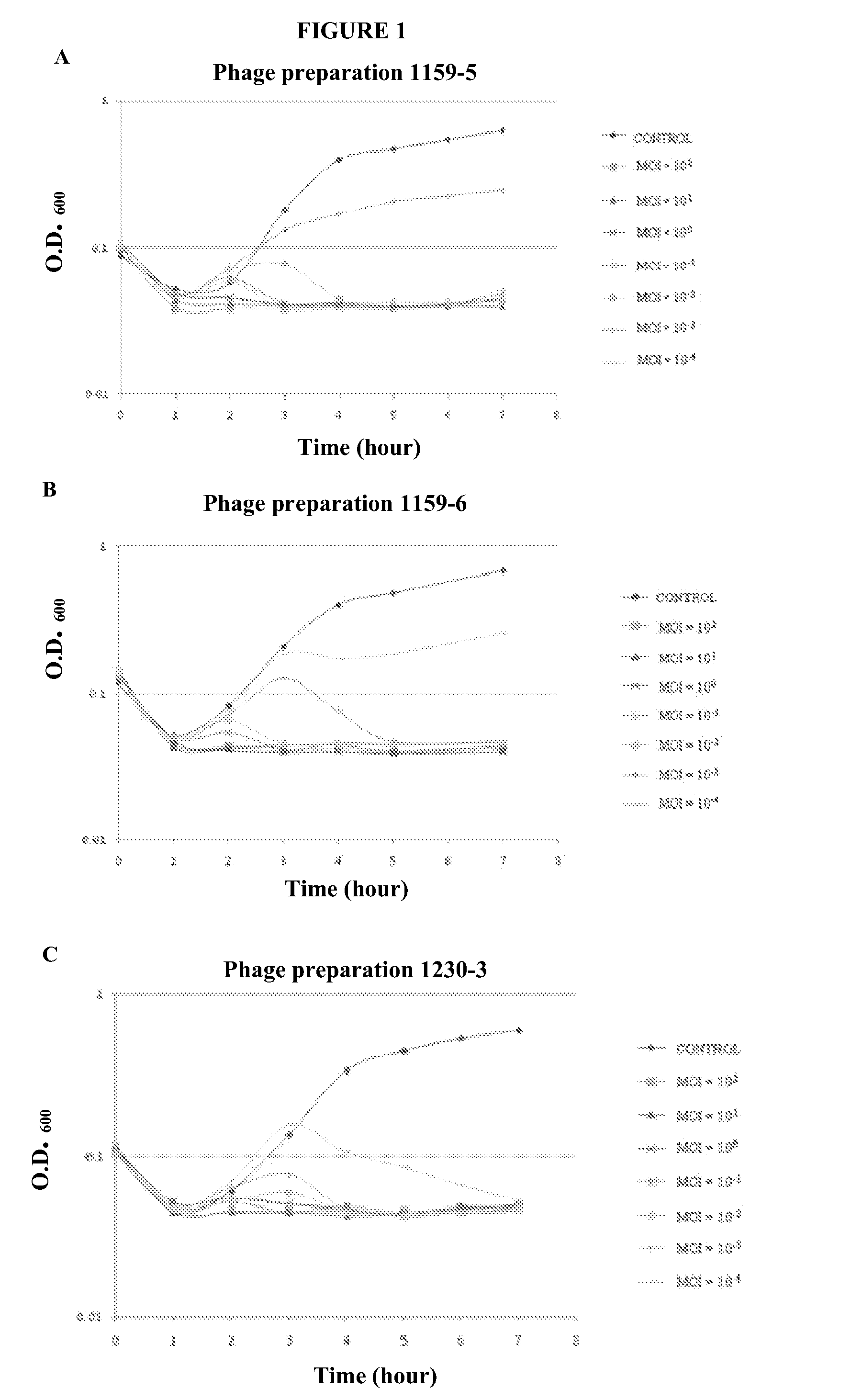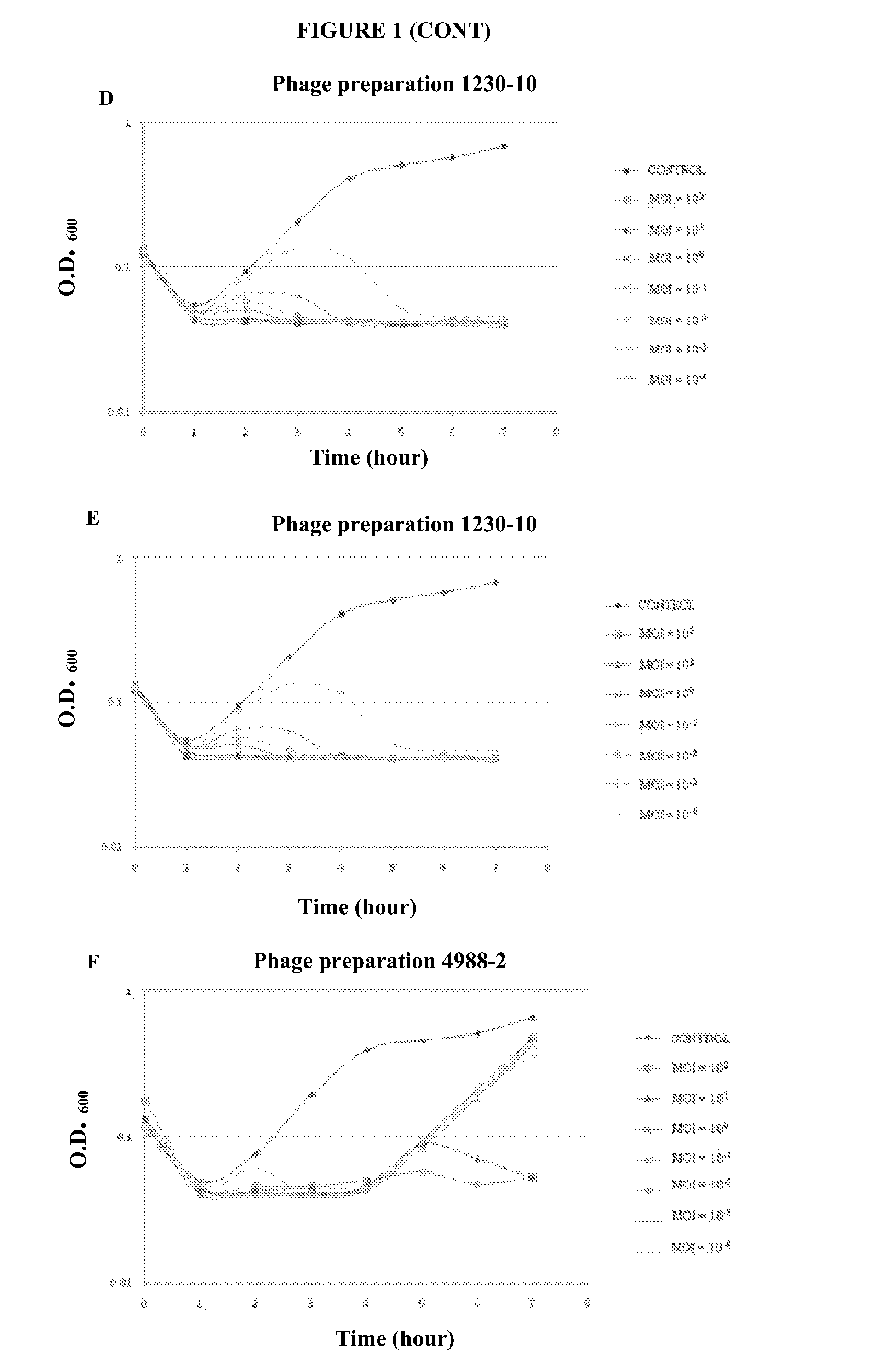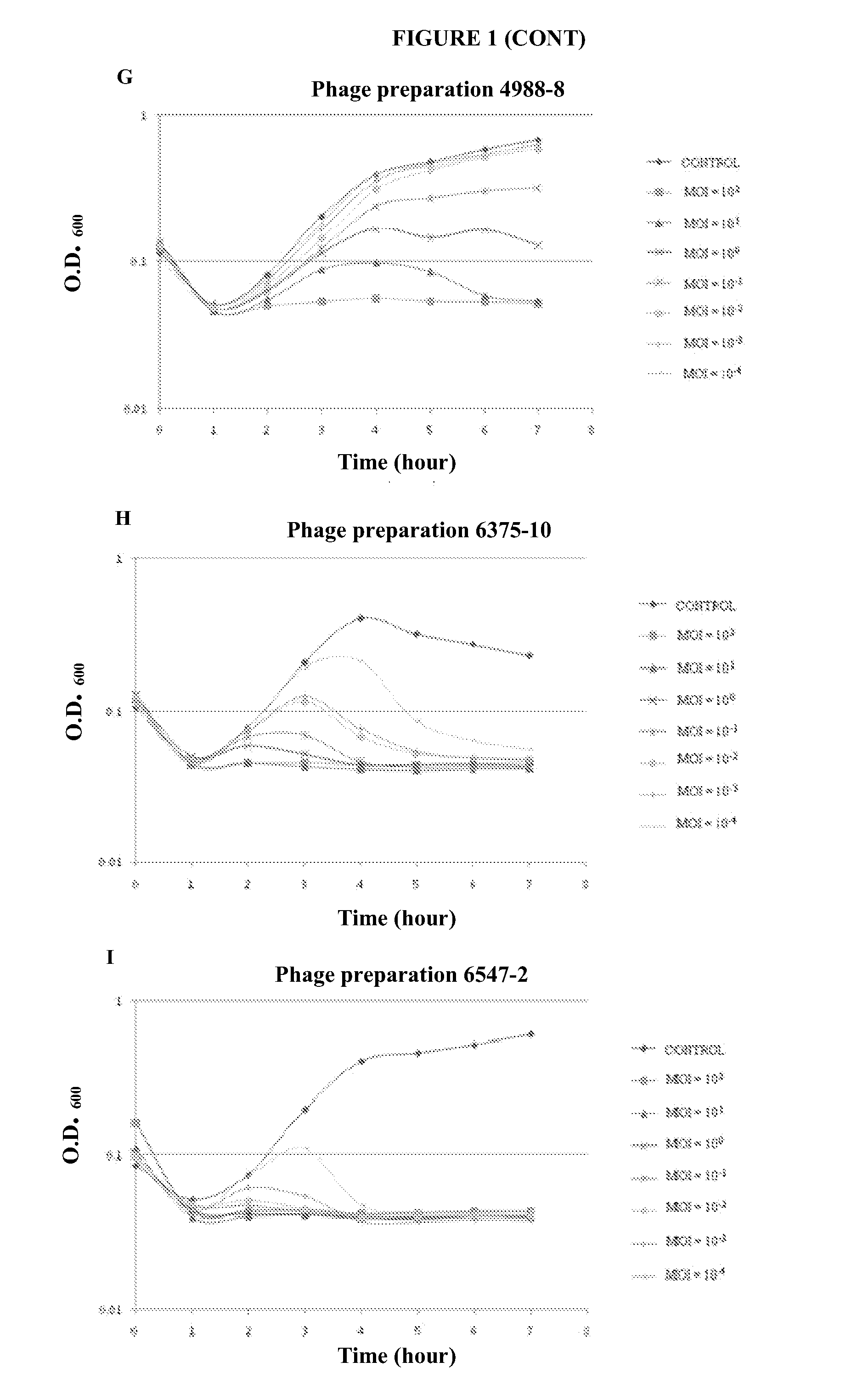Compositions and methods for preventing and treating uterine disease
- Summary
- Abstract
- Description
- Claims
- Application Information
AI Technical Summary
Benefits of technology
Problems solved by technology
Method used
Image
Examples
example 1
Isolation and Lytic Activity Quantification of Bacteriophages
[0075]The objective of this study was to isolate bacteriophages from environmental samples of two large commercial dairy farms using wild strains of Escherichia coli as hosts. A total of 57 Escherichia coli were isolated from the uterus of postpartum Holstein dairy cows and phylogenetically grouped by triplex PCR. Additionally, 11 bacteriophage preparations were isolated from manure systems of commercial dairy farms and characterized for in vitro antimicrobial activity. Each bacterial host was inoculated with their respective bacteriophage preparation at several different multiplicities of infections (MOI) to determine minimum inhibitory MOI. The effect of a single dose (MOI=102) of bacteriophage on the growth curve or all 57 E. coli isolates was assessed using a microplate technique. Furthermore, genetic diversity within and between the different bacteriophage preparations was assessed by bacteriophage purification follow...
example 2
In Vitro Antimicrobial Activity Evaluation of a Bacteriophage Cocktail and Several Antibiotics
[0099]The use of pathogenic-specific antimicrobials, as proposed by bacteriophage therapy, will reduce the incidence of resistance development. Eighty Escherichia coli isolated from the uterus of Holstein dairy cows were phenotypically characterized for antimicrobial resistance to ampicillin, ceftiofur, chloramphenicol, florfenicol, spectinomycin, streptomycin and tetracycline by broth microdilution method. The lytic activity of a bacteriophage cocktail against all isolates was performed by similar method. Additionally, the effect of different concentrations of antimicrobials and multiplicities of infections (MOI) of the bacteriophage cocktail on E. coli growth curve was measured. Isolates exhibited resistance to ampicillin (33.7%), ceftiofur (1.2%), chloramphenicol (100%) and florfenicol (100%). All strains were resistant to at least 2 of the antimicrobial agents tested; multidrug resistan...
example 3
Molecular and Epidemiological Characterization of Bovine Intrauterine Pathogenic Escherichia coli (IUPEC)
[0128]This example describes the isolation and characterization of IUPEC strains.
Material and Methods
Farm, Management and Sample Collection
[0129]Data were collected from 4 dairy farms located near Ithaca, New York, from Aug. 17, 2009, to Jan. 29, 2010. Farm A milked 2,800 cows, farm B milked 3,000 cows, farm C milked 1,600 cows and farm D milked 1,000 cows. These farms were selected because of their long history of a working relationship with the Ambulatory and Production Medicine Clinic at Cornell University. The herds consisted of Holstein cows housed in free-stall barns with waste paper pulp bedding. Cows were milked 3 times daily in milking parlors. All lactating cows were offered a total mixed ration (TMR) consisting of approximately 55% forage (corn silage, haylage, and wheat straw) and 45% concentrate (corn meal, soybean meal, canola, cotton seed, and citrus pulp) on a dry...
PUM
| Property | Measurement | Unit |
|---|---|---|
| Fraction | aaaaa | aaaaa |
| Temperature | aaaaa | aaaaa |
| Temperature | aaaaa | aaaaa |
Abstract
Description
Claims
Application Information
 Login to View More
Login to View More - R&D
- Intellectual Property
- Life Sciences
- Materials
- Tech Scout
- Unparalleled Data Quality
- Higher Quality Content
- 60% Fewer Hallucinations
Browse by: Latest US Patents, China's latest patents, Technical Efficacy Thesaurus, Application Domain, Technology Topic, Popular Technical Reports.
© 2025 PatSnap. All rights reserved.Legal|Privacy policy|Modern Slavery Act Transparency Statement|Sitemap|About US| Contact US: help@patsnap.com



